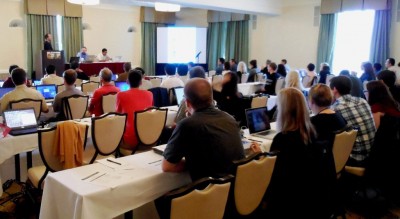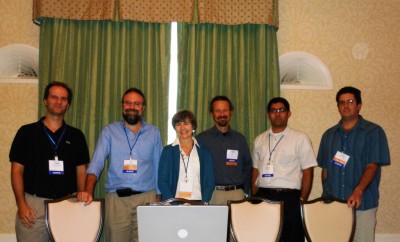Radar Love
Published: 27 September 2011

Radar technology has come a long way since the first radars were developed by the U.S. Air Force for defense purposes. Advances in both software and hardware—especially in the last decade or so—allow for programming that results in greatly improved measurement sensitivity and resolution since the first ARM zenith pointing cloud radar started operating continuously in 1996. We’ve deployed 18 new scanning radars in the past year alone, nearly doubling the number of radars in the ARM collection. This means there is a LOT of data that’s brand new and nobody’s seen it before, let alone used it.
The morning was spent on overviews of cloud radar theory, technology, and current ground-band airborne platforms. After lunch, the attendees received a thumbdrive with sample radar Doppler spectra from different ARM radars and a spectra browser graphical user interface. Attendees used the browser to load, display, and process the spectra data during a hands-on “Doppler spectra lab” that took place in the afternoon. This browser will soon be available to data users, so stay tuned!

- Ed Luke and Karen Johnson, Brookhaven National Laboratory
- Simone Tanelli, NASA Jet Propulsion Laboratory
- Nitin Bharadwaj, Pacific Northwest National Laboratory
- David Leon, University of Wyoming
Thanks to these great instructors and to everyone who participated!
The ARM Climate Research Facility is a DOE Office of Science user facility. The ARM Facility is operated by nine DOE national laboratories, including .
Keep up with the Atmospheric Observer
Updates on ARM news, events, and opportunities delivered to your inbox
ARM User Profile
ARM welcomes users from all institutions and nations. A free ARM user account is needed to access ARM data.


















